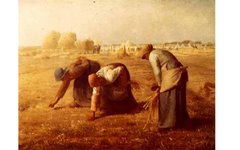
Sichuan pepper, Chinese prickly ash, and Zanthoxylum Piperitum - they sound very different to my ears, but they are just different variant names for hua1 jiao1 (花椒), a key ingredient in Sichuan cuisine. I didn't know its English names until just a few weeks ago when we had some friends over for dinner.

For that Xinjiang-themed dinner (one of the guests recently returned from a trip to Xinjiang), I made a Big Plate Chicken dish (大盘鸡), a popular Xinjiang dish, in China. One of the required ingredients according to a recipe that I had was hua jiao (花椒). One of the guests asked me where I bought the Sichuan pepper, for as far as they know, Sichuan Pepper has been banned for importing from China by USDA since 2000 due to some serious disease that it could cause for certain plants. (It turns out that recently the US has started allowing imports of Sichuan Pepper again on condition that it's heated up to a certain degree. Don't ask me why - I don't know the science behind it.) I actually didn't use Sichuan pepper, I used black peppercorns instead. No wonder when I threw them into hot oil, they were exploding and splashing oil and bits of peppercorns all over the place! If I had used real Sichuan pepper, that wouldn't have happened. Why? Because instead of crackling up in hot oil, Sichuan pepper would quiet the sizzle and disperses its flavor through oil.
Although it is called "hua jiao" (flower pepper) in Chinese and has a peppery taste to it, it really has nothing to do with chili pepper or black pepper. Sichuan pepper is from a completely different plant and is famous for its unique flavor that it adds to dishes. In Chinese, it is usually described as "numbingly spicy." However one wants to describe its tastes, a lot of us crave for that special kick and will gladly welcome that numbing sensation. Agaisnt common intuition, the strong flavor actually resides mostly in the shells of the dried fruits of the Sichuan pepper tree.
The Chinese not only use it widely in cooking, but also in medicine and daily housekeeping chores. According to the Chinese medicine, hua jiao is good for your lungs, spleen and kidneys. To ease the soreness of your feet, you could soak your feet in hot water infused with Sichuan pepper oil. To keep your closet free of clothes-eating bugs, hang a mesh bag of Sichuan pepper. Got a bug in your ears, a few drops of Sichuan pepper oil would force it out.
Apparently, its uses have been recognized and appreciated by the Chinese long time ago. During the Han Dynasty (206 BC - AD 220), it is said that the concubines and princesses in royal court would paint the walls of their palace with a special mix of paint, in which the main ingredient was Sichuan pepper. Supposedly, that helps keep the palace warm and give it a fragrant aura. The seeds of Sichuan pepper also symbolically create an auspicious ambiance and bring good luck for producing offspring. With its wide use in the royal concubines' quarters, came about another variant name, 椒 房 (jiao1 fang2), for 后宫(hou3 gong1), the Chinese version of harem in the royal palace.
Next time when I use Sichuan pepper, I will use it admirably!

